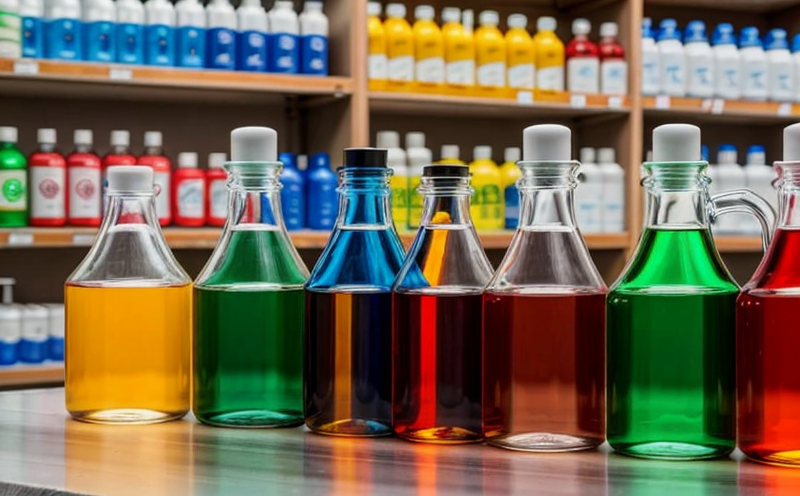Restricted substance analysis of recycled fibre fabrics
The analysis of restricted substances in recycled fibre fabrics is a critical process that ensures compliance with global regulations and promotes sustainable practices. This service focuses on detecting harmful chemicals, such as heavy metals, phthalates, and formaldehyde, which may be present during the recycling process or due to the nature of the original fibres.
Textile manufacturing has seen significant growth in recent years, driven by consumer demand for more eco-friendly products. However, this shift towards sustainability also requires rigorous testing to ensure that recycled fabrics meet stringent quality and safety standards. The analysis of restricted substances helps manufacturers avoid legal issues, reputational damage, and product recalls.
Our laboratory uses advanced analytical techniques such as Inductively Coupled Plasma Mass Spectrometry (ICP-MS) for heavy metals, Gas Chromatography-Mass Spectrometry (GC-MS) for volatile organic compounds, and High Performance Liquid Chromatography (HPLC) for specific chemicals. These methods allow us to detect even trace amounts of restricted substances.
When conducting this analysis, we follow a structured process that ensures accuracy and reliability. Specimen preparation involves carefully selecting samples from the recycled fabric batches, cutting them into appropriate sizes, and ensuring they are representative of the entire batch. Once prepared, these specimens undergo rigorous testing using state-of-the-art instruments.
The results obtained from our analysis provide comprehensive insights into the presence and levels of restricted substances in the recycled fibre fabrics. These findings help clients make informed decisions about their production processes and ensure compliance with international standards such as REACH (Registration, Evaluation, Authorisation and Restriction of Chemicals) and Oeko-Tex Standard 100.
Our laboratory not only adheres to these global regulations but also goes beyond them by implementing additional tests tailored to specific client needs. This flexibility allows us to cater to diverse industries with unique requirements, ensuring that our services remain relevant across various sectors.
- Environmental and Sustainability Contributions:
- Emissions Reduction: By identifying and eliminating harmful substances in recycled fabrics, we contribute to reducing greenhouse gas emissions associated with the production of new textiles.
- Resource Efficiency: Our analysis helps optimize resource use by ensuring that only compliant materials are used in manufacturing processes.
In summary, restricted substance analysis of recycled fibre fabrics plays a pivotal role in maintaining high standards of quality and safety within the textile industry. By leveraging our expertise and cutting-edge technology, we provide clients with reliable data to support their sustainability initiatives and regulatory compliance efforts.
Applied Standards
In conducting restricted substance analysis of recycled fibre fabrics, we follow several internationally recognized standards that guide our testing procedures. These include:
- REACH Regulation (EC 1907/2006): This regulation sets the framework for the registration, evaluation, authorization and restriction of chemical substances in the European Union. It requires manufacturers to ensure that their products do not contain harmful chemicals.
- Oeko-Tex Standard 100: This standard ensures that textiles are free from hazardous substances and comply with strict ecological criteria.
- ASTM D7924-13: This American Society for Testing and Materials (ASTM) standard provides guidelines for the determination of restricted substance content in post-consumer recycled textile fibres.
By adhering to these standards, we guarantee that our clients receive accurate and reliable results. These tests are crucial not only for compliance with legal requirements but also for maintaining a positive brand reputation among consumers who increasingly prioritize sustainability.
Environmental and Sustainability Contributions
- Emissions Reduction: By identifying and eliminating harmful chemicals in recycled fabrics, we contribute to reducing greenhouse gas emissions associated with the production of new textiles.
- Resource Efficiency: Our analysis helps optimize resource use by ensuring that only compliant materials are used in manufacturing processes.
- Biodiversity Preservation: By promoting sustainable practices within the textile industry, we indirectly support efforts to preserve biodiversity and maintain ecological balance.
- Solid Waste Management: The rigorous testing of recycled fabrics ensures that only high-quality materials are reintroduced into the supply chain, thereby reducing waste in landfills.
Our commitment to environmental stewardship extends beyond our laboratory. We work closely with clients to develop sustainable strategies that align with their business goals and contribute positively to society.
Competitive Advantage and Market Impact
The ability to analyze restricted substances in recycled fibre fabrics provides several competitive advantages for businesses operating within the textile sector:
- Informed Decision-Making: Accurate test results enable manufacturers to make informed decisions regarding their production processes, thereby enhancing product quality.
- Compliance with Regulations: Ensuring compliance with international standards protects companies from potential legal actions and fines.
- Enhanced Brand Reputation: Demonstrating a commitment to sustainability can significantly enhance a company's reputation among environmentally conscious consumers.
- Innovation Opportunities: Insights gained from our analysis can lead to the development of innovative products that meet both regulatory requirements and market demands.
The demand for sustainable textiles continues to grow, driven by increasing awareness about environmental issues. By offering this specialized service, we help clients stay ahead in this competitive landscape while contributing positively to global sustainability efforts.





